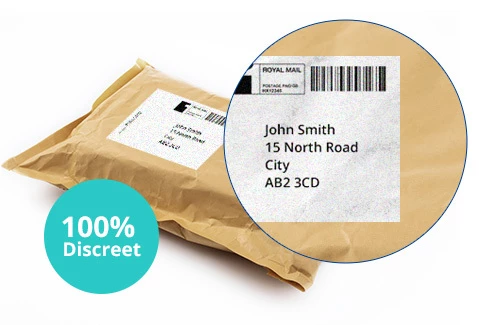Treatments we could recommend:
Eczema
View our range of eczema treatments online
Showing all 3 results
-

Eumovate 0.05% Cream/Ointment
From: £14.99
View product -

Betnovate RD 0.025% Cream/Ointment
From: £22.49
View product -

Hydrocortisone 1% Cream/Ointment
From: £7.99
View product
Complete a consultation to find a suitable treatment for you.
Eczema, the most common form being atopic eczema, is a condition that causes skin to become itchy, dry and cracked. Whilst more common in children, it is usually a long-term condition affecting individuals of all ages, although it can improve significantly or even clear up completely with time. Eczema may also develop for the first time in adults.
What are the symptoms of Eczema?
The typical symptoms associated with eczema include itchy, dry, cracked and sore skin.
Whilst some people may only have small patches or dry skin, others may experience widespread inflamed skin over numerous parts of the body.
At times, the skin may become inflamed and appear red on lighter skin and darker brown, purple or grey on darker skin.
The severity of atopic eczema can vary from person to person and some individuals may only have mild eczema, whilst others may have more severe cases of eczema.
There are usually periods where the symptoms improve, whereas there are other periods where symptoms can get worse. The periods where symptoms can get worse are known as flare ups, which can occur as often as 2 or 3 times a month.
In some cases, areas of the skin can become infected and you may experience the following:
- Eczema becoming a lot worse
- Fluid oozing from the skin
- Yellow crusting of the skin surface
- Small slightly yellow and white spots
- Swollen and sore skin
- General feeling of being unwell, including feeling hot and shivery
If atopic eczema is showing signs of infection, it should be assessed by a doctor as soon as possible.
What areas of the body does Eczema affect?
Although atopic eczema can affect any part of the body, the main common areas affected include the hands, inside of the elbows and back of the knees. In children, it can commonly affect the face and scalp.
How can eczema be diagnosed?
If you feel you have eczema, you see your GP as they will be able to assess and make a diagnosis by looking at the skin and asking questions about your symptoms, including when it started, where it appears, family history and assess your past medical history.
Typically, for a diagnosis of atopic eczema to be made, you should have experienced an itchy skin condition in the last 12 months and have 3 more of the following:
- Generally dry skin over the last 12 months
- Irritated red skin in the creases of your skin e.g. inside your elbows or front of the knees
- A history of skin irritation occurring in those same areas
- History of asthma or hay fever
- The condition starting in your early years
What are the causes of eczema?
The exact cause of atopic eczema is not known, but there may be a range of potential causes including:
- Allergy – the term “atopic” means sensitivity to allergens and atopic eczema commonly occurs in people who get allergies
- Family history – eczema can run in families and is linked to other conditions such as asthma and hay fever
- Potential triggers – certain triggers can cause symptoms of atopic eczema to appear including soap, detergents, stress, weather and hormonal changes
Food allergies may also play a role in eczema, so you may be asked to keep a food diary to try to determine which specific foods can be making your symptoms worse. Whilst allergy tests are not usually needed, they can help identify whether a potential food allergy is triggering your symptoms.
How can you treat atopic eczema?
The aim of treatment is to relieve the symptoms as eczema in many cases, improves over time.
Severe eczema can have a significant impact on daily life including an individual’s physical and mental well being and with atopic eczema, there is an increased risk of potential skin infections.
Whilst there is currently no cure for atopic eczema, there are ways to control symptoms and manage eczema, including:
- Self-care techniques e.g. cutting nails short, reduce scratching and avoiding triggers
- Skin-care techniques
- Emollients – which play a vital role in managing eczema and should be used on a daily basis for dry skin
- Topical corticosteroids – which are used to reduce swelling, redness and itching during flare ups
There are other treatments that may be used for eczema in sensitive sites that are not responding to treatment and in some cases, you may be referred to a dermatologist (skin specialist) to issue stronger treatment options. Whilst in other cases, specially in the case of a severe itch, antihistamines may be recommended.
Emollients
These are treatments that are applied to moisturise the skin – it helps reduce water loss and provides a protective film to cover the skin. Whilst usually available over the counter from a local pharmacy, they play a very important role in managing dry skin conditions such as atopic eczema.
This is as in addition to providing a moisturising effect, they also have a mild anti-inflammatory role which may help reduce the number of flare-ups.
There are many different types of emollients so it is always wise to talk to a doctor or pharmacist to determine which may be the right one for you to use. In certain situations, it will be a case of trial and error to determine which one works best for you. In some cases, if you are using a particular emollient for a long time, it may start to become less effective and begin to irritate the skin. In which case, you may need to find another emollient which is better suited for you and this can be discussed with your GP or pharmacist.
Certain individuals may find a mixture of emollients helpful as they all have different benefits. For example, an ointment is generally considered suitable for very dry skin, whilst a cream may be suitable for less dry skin. This is as creams and ointments contain different amounts of oils and ointments provide the strongest emollient effect and may be more effective, but as they are greasy they may be more suitable for use at night.
Mild eczema can be managed through the correct use of emollients whereas in some cases, a GP may recommend also using a topical corticosteroid.
How to use emollients
Emollients should be used all the time, even if you are not experiencing any symptoms. It should be used at least twice a day, and if possible, more often, particularly if you have very dry skin.
When using the emollient, you should look to use a large amount. You should not rub it in, but instead it should be smoothed into the skin in the same direction that hair grows. If you finish a bath or shower, you should gently pat the skin dry and then apply the emollient whilst the skin is still moist as this helps retain the moisture.
If you are experiencing a flare-up, you should apply generous amounts more frequently but you may also need to apply other treatments e.g. a topical corticosteroid, to treat inflamed skin as an emollient on its own may not be sufficient.
Topical corticosteroids
These are medical treatments that contain a steroid and are applied locally to the skin.
They are usually reserved for sore and inflamed skin and can work within a few days to reduce the inflammation.
There are many different types and strengths of topical corticosteroids, and the type you will need will depend upon the severity of your atopic eczema and the areas affected.
There strengths range from the following:
- Very mild/mild e.g. hydrocortisone
- Moderate e.g. betamethasone valerate (Betnovate RD) and clobetasone butyrate (Eumovate)
- Strong e.g. higher doses of betamethasone valerate and betamethasone dipropionate
- Very strong e.g. clobetasol propionate and diflucortolone
It is important to note that whilst these treatments contain corticosteroids, they are available in different brand names.
How to apply topical steroid treatments
It should be applied to the affected areas, as recommended by your GP or doctor, to control your eczema.
Unless otherwise stated, you should always follow the instructions provided in the patient information leaflet that comes with the medication.
When using it with an emollient, you should ideally apply the emollient first and wait around 15-30 minutes for it to be soaked into the skin before applying the corticosteroid cream or ointment.
Topical corticosteroids should generally be used for 48 hours after the flare-up has cleared – this is to ensure the inflammation under the skin is treated sufficiently.
What are the side effects of topical corticosteroids?
Topical corticosteroids may cause mild stinging sensations when you apply them.
Transient burning or stinging is common, especially in the first 2 days of application on untreated, inflamed skin. It does not usually require a change of treatment as it usually improves as the skin responds to treatment – however if it does not improve, you should seek medical attention.
In more serious cases, it may also cause:
- Thinning of the skin – this is more likely to occur if you are using stronger steroids, or using steroids in the wrong places, or using steroid preparations for too long
- Changes in skin colour – this can occur after many months of using strong steroid preparations
For more information, including other potential side effects, you should always read the patient information leaflet provided with any medication.
Are there other types of eczema?
Yes, whilst the most common form is atopic eczema, eczema is the name for a group of skin conditions that cause dry and irritated skin. Other types of eczema include:
- Contact dermatitis – this is a type of eczema that occurs when the body comes into contact with a particular substance that irritates the skin
- Discoid eczema – this is a type of eczema that causes circular or oval patches on the skin
- Varicose eczema – this is a type of eczema that usually affects the lower legs and is caused due to blood flow problems through the veins in the legs
- Seborrhoeic eczema – this is a type of eczema where red and scaly patches develop on the sides of the nose, ears, eyebrows and scalp
- Dyshidrotic eczema – this is a type of eczema that causes tiny blisters to erupt across the palms of the hands
What are some of the complications of atopic eczema?
Some people with atopic eczema can sometimes develop further problems, such as bacterial or viral skin infections. Whereas, in some cases, it can also have psychological effects as it may lead to bullying, problems sleeping and affect individuals self-confidence.
Where can I find more information on eczema?
You can find more information on eczema on The British Association of Dermatologist (BAD) website as they have produced an information leaflet on Atopic Eczema, as well as The National Eczema Society website which has a range of different factsheets on eczema.
If you have any questions or concerns, it is always wise to visit your GP or pharmacy for further advice and assessment.







